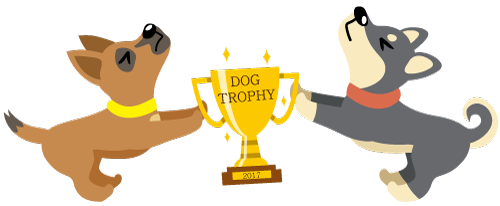Does Small Dogs have Napoleon Syndrome? Symptoms of small dog syndrome include disobedience to commands, an attempt to take over the events in the house and over the household, and a ban on access to food.
We often have the opportunity to hear the statement in ordinary discussion among people that someone is complex due to their small stature and that small people are aggressive because they want to compensate to the lack of physical appearance, which is most often related to height.
Experts believe that, regardless of the ingrained opinion, such behaviour in people are not related to height or physical appearance, but that it is a consequence of upbringing, and the influence of the environment in growing up.
Is it the same with dogs, that is — with smaller dogs?
Behavior
Every dog lover knows that small dogs can have a great personality, but also that they can behave like all other dogs. A small dog will, with its behaviour, just like a big one, show clearly what it wants, especially if it is a walk or expressing emotions towards other dogs or people. There is no difference in their behaviour, and physical size obviously do not play a role in that.
Small dog syndrome
So does small dog syndrome then exist? Experts say — yes. There is a big difference between a typical small dog and dogs that have this syndrome. Dogs that are small in stature and do not have behavioral syndrome are the same as any other dog that has come into your family.
He is slowly adapting to the new situation, and looking for his place in the environment. In doing so, it does not in any way try to impose its will, or does so very slowly, as it conquers the space and hearts of its new owners. This harmonious development basically guarantees that you will have a dog that will not cause problems, i.e.. will find a suitable place in the new “pack.”
Symptoms of small dog syndrome include disobedience to commands, an attempt to take command / dominance over events in the house as well as the household (does not want to move from an armchair or other favorite place), keeps his toys and does not allow access to his food.
He tries to bite pets or other pets if he doesn’t like something in their behavior or if he thinks, they are a potential threat. As with most psychological changes, these problems deepen and become greater as time goes on, especially if they are not responded to in time.
The solution
How is the problem of small dog syndrome solved? First, we must be aware that the essence of this syndrome is the struggle for domination. The dog shows dominance by jumping on you or trying to bite you, most often in the game.
There is no genetic predisposition for such emotional expressions, but it is mostly a habit. The behavior of the dog and its greater or lesser dominance depends primarily on the attitude of the owner and the way of socializing and raising the dog that came to your house.
Customization
We must understand that it is a big change for a dog when from the litter in which he was “his” he suddenly comes to a completely unknown space where completely different rules apply. We have to help him master them properly and adapt quickly to the new situation, but not to the detriment of other family members or other pets.
He should not be allowed too much freedom, and the new owners must be consistent and have the same attitude. Of course, this does not mean that he will not be pampered and that he will not be pampered to one “red line” that you must have in order for the dog to develop, socialize and fit in normally.
Errors
One of the biggest mistakes is to call a trainer who will put the dog in order. It often happens that the dog gets used to have to the trainer, but when he leaves, the dog becomes old again, and behaves in accordance with his habits. Everything your dog needs to learn from the basic commands, you can do it yourself without any major problems. The best opportunity for that is walking with a dog that is on a leash, and where you teach him basic commands while walking.
For example, to stand, sit or lie down. In this way, the dog acquires the right habits that keep him and you, and at the same time learns there are limitations to which he must get used. You have to start with all these measures very early, because experts generally agree that the dog is formed by the eighteenth or twentieth week of life, and that it is difficult to change habits later.





